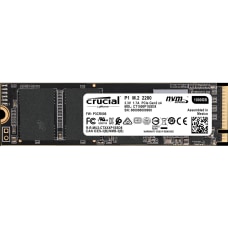- Px 7201 Solid State Dc Drives Notes Pdf
- Ee8601 Solid State Drives Notes Pdf
- Solid State Drives Notes Pdf Files
- These class notes were originally based on the handwritten notes of Larry Overzet. It is expected that they will be modified (improved?) as time goes on. This version was typed up by Matthew Goeckner. Solid State Electronic Devices - EE3310 Class notes Introduction Homework Set 1 Streetman Chap 1 # 1,3,4,12, Chap. 2 # 2,5 Assigned 8/22/02 Due 8.
- SSD drives typically have a factory guideline for lifetime of the NAND. NAND is the technology that is used by SSD drives. NAND cells degrade with every write on the SSD drive. This means that if you will rarely place new files on your drive, the SSD will last a long time. A solid state drive opened up looks like a circuit board.

Short for solid-state drive, an SSD is a storage medium that uses non-volatile memory to hold and access data. Unlike a hard drive, an SSD has no moving parts, which gives it advantages, such as faster access time, noiseless operation, higher reliability, and lower power consumption. The picture shows an example of an SSD made by Crucial.
SOLID STATE DRIVES AND HOW THEY WORK BOOK! I have published TWO NEW Book/PDFs. The first is all my research and graphics with text content and notes on SSD (Solid State Drives). This book is over 100 pages about the basics for how SSD NAND Drives (Flash Memory) and Solid State Drives and how they work from a Forensic and Data Recovery Standpoint. 10 BCH for Solid-State-Drives 259 A. Micheloni 11 Low-Density Parity-Check (LDPC) Codes 293 E. All Dell Enterprise Solid State Drives are developed to precisely match the Dell Enterprise systems and to provide customers with an optimal production environment. The hard drive industry has recently seen consolidation of suppliers and standardization of drives. This has not been the case for Solid State drives.
As the costs have come down, SSDs have become suitable replacements for a standard hard drive in both desktop and laptop computers. SSDs are also a great solution for netbooks, nettops, and other applications that don't require a lot of storage.
 Note
NoteAlthough an SSD uses flash memory, it should not be confused with a USB jump drive or Adobe Flash.
NoteAn SSD may also be short for solid-state disk, although it doesn't use a disk mechanism.

What are the different types of SSDs?
There are several types of SSDs with varying speed and connection types, including 2.5', mSATA, M.2, and PCIe. The following section briefly reviews each type.
Px 7201 Solid State Dc Drives Notes Pdf
- 2.5': This is the most common type of SDD on the market. They offer the best value per GB and, while being the slowest, are still plenty fast.
- mSATA: Short for Mini-SATA, these SSDs have a very small form factor, a different connection type, and are a bare circuit board, unlike their enclosed 2.5' counterparts. They're a bit faster than a 2.5' SSD and are often used in laptops and netbooks; devices where space is a concern.
- M.2: Similar to mSATA, these drives are a bare circuit board. The significant differences are that they come in both SATA and PCIe versions, and that they have different lengths and widths, allowing for more flexibility. Also, M.2 SSDs can support NVMe, which mSATA and 2.5' do not.
- PCIe: These are the fastest and most expensive SSDs. As the name would imply, they use a PCIe slot (the same slot your video card uses). They offer speeds that are roughly four times faster than a standard SATA drive.
What are the speeds of the different SSDs?
SSDs have traditionally used the SATA connection, which has a theoretical maximum transfer rate of 750 MB per second. Newer generations of SSDs connect to the motherboard's PCIe connection, offering speeds of up to 1.5 GB per second. The PCIe M.2 connection standard, introduced in 2014, offers a maximum real-world throughput of approximately 4 GB/s.
History of the SSD
Devices similar to the SSDs we use today began being introduced in the 1970s. The early SSDs used core and DRAM technologies to store information. For example, Dataram released the first SSD called the BULK CORE in 1976. The bulky device was only capable of storing 2 MB of data. The first semiconductor storage SSD was the StorageTek STC 4305 that was released in 1978, capable of storing 45 MB of data and costing $400,000.
Need for speed carbon repack. Flash memory was later introduced and developed further in the 1980s, paving the way for the introduction of the first commercial flash-based SSD released by SunDisk in 1991. The SunDisk SSD was a 20 MB PCMCIA and available for around $1,000. Later, SanDisk (formerly SunDisk) released the first SSD with PATA interfaces in 1998.
Since SSDs were first released, major improvements were made, prices have decreased, and storage capacities have increased to over 4 TB for home computers.
Ee8601 Solid State Drives Notes Pdf
Related pages
Solid State Drives Notes Pdf Files
Computer acronyms, Hardware terms, Hybrid hard drive, NVMe, Solid-state device, Solid-state memory, Storage device

